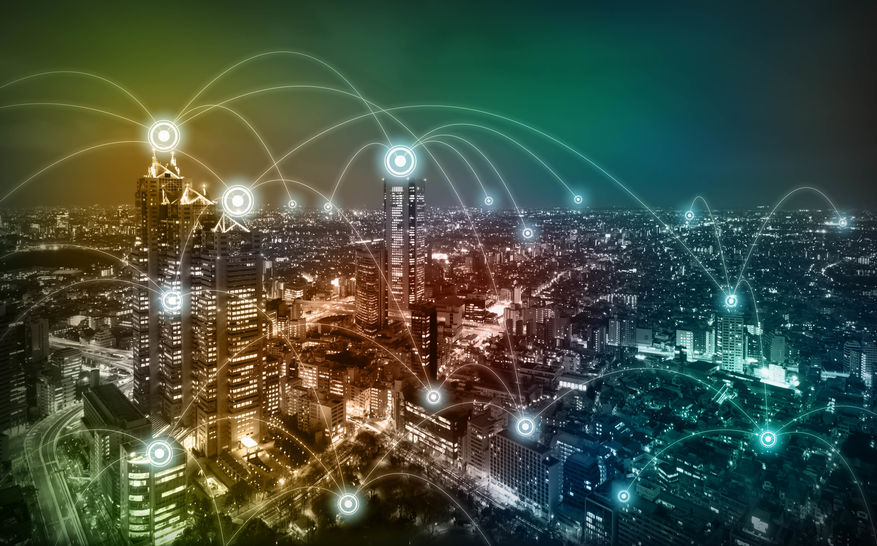Understanding LoRaWAN® End Devices
LoRa® (“long range”) is one of today’s leading LPWAN® standards for supporting wireless sensors. Using LoRa, organizations can link thousands of internet-enabled devices together and launch next-gen Internet of Things (IoT) applications that transform lives and processes forever. Smart cities, smart homes, smart agriculture -- these are a few examples of emerging sectors that exist because of wireless sensors
Connecting Smart Cities With Wireless Sensors
One of the most exciting aspects of the Internet of Things (IoT) is how it is transforming global cities. Today’s cities are evolving into modern hubs of connectivity and efficiency with long-range wireless sensors. City leaders are using wireless sensor technology to streamline information flow between physical objects in order to optimize infrastructure developments, reduce energy costs, and support business
Boosting Building Security With Wireless Sensors
Wireless sensor technology is revolutionizing brick-and-mortar security. Using wireless sensors and low-power wide area networks (LPWANs), we are now able to transform everyday objects into Internet-enabled devices that help us protect buildings and homes. Without spending much capital, facility managers can use low-maintenance Internet of Things (IoT) sensors to monitor diverse environments, track activity in specific rooms, and
Healthcare Facilities Providing Better Care With Wireless Sensors
Healthcare is another sector that will be transformed by Internet of Things (IoT) technology. Low-cost wireless sensors supported by low-power wide area networks (LPWANs) are enabling many applications in a variety of healthcare settings, from hospitals to senior living communities. Wireless sensors help healthcare institutions take better care of patients and staff, while also preserving delicate assets, such
LoRaWAN® Gateways
Choosing the Right LoRaWAN® Gateway For Your Application
LoRaWAN® is an openly available wireless protocol that sits on top of LoRa®, one of the leading emerging standards for supporting long-range wireless sensor technology. LoRa uses a proprietary modulation scheme developed by Semtech called chirp spread spectrum that is resistant to multi-path fading. The standard runs at 915MHz in the US,Monitoring Environmental Conditions With Wireless Temperature Sensors
Thanks to wireless sensor technology, we can automate information flow between everyday objects and enhance operations across diverse industries. One sensor type that has major implications for many areas is the wireless temperature sensor. With wireless temperature sensors, businesses can detect temperature and humidity thresholds or rates of rise throughout the entire year. Organizations can monitor local environments to
Reducing Flood Damage with Wireless Water Leak Sensors
Wireless sensors are transforming how we live and interact with our world. With wireless sensors, we are able to connect everyday objects to the web and automate information flow in new ways. Consequently, organizations can enhance service offerings and increase the efficiency of their operations. One type of wireless sensor that is becoming just as important as building security for
Wireless Sensors Transforming the Retail Space
The secret’s out about the Internet of Things (IoT). It’s going to change our world. One of the spaces that will be impacted is the brick-and-mortar retail sector. Retail stores can use wireless sensor networks to enhance onsite security, improve operations, and serve customers better. Using wireless sensors, retail managers are able to connect everyday objects and enable many IoT
Choosing the Right Wireless Standard For Your IoT Sensors
There are numerous wireless standards available today for connecting devices and sensors. Choosing the right one for your IoT solution depends on your specific needs and applications. In this article, you will learn about:
- Traditional solutions (i.e. cellular, WiFi, Zigbee, BLE)
- Emerging wireless standards (LoRa®, Sigfox, NB-IoT)
- Measuring range
- Measuring battery life
Traditional Solutions: Cellular, WiFi, Zigbee, BLE
For many years, cellularWireless Sensors for the IoT
The Internet of Things (IoT) is going to change our world. It is estimated that there will be nearly 22 billion IoT devices by 2025. Extending internet connectivity to everyday objects will transform industries and create tremendous cost savings. But how do non-internet-enabled devices gain connectivity capabilities? Through wireless sensors. With










